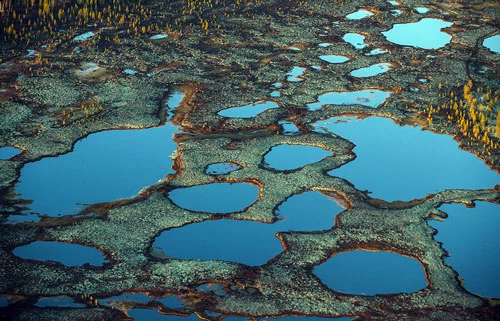
Scientists from six countries prepared in 2017 an expedition to the Lena River in order to identify the influence of the Siberian rivers to the degradation of the submarine permafrost in the Arctic and global warming, told Tass Arctic explorer, Professor of Tomsk Polytechnic University (TPU), Head of the Laboratory of Arctic research in the Pacific Oceanological Institute FEB RAS Igor Semiletov.
“This year we have prepared and carried out an expedition along the Ob The next year plans -… The expedition along the Lena Importantly, Lena, unlike Obi, occurs in permafrost zone This means that we want to compare the features of the functioning of ecosystems in the frozen and non-frozen watersheds of the great Siberian rivers “- Semiletov said.

During the expedition, scientists will study the peculiarities of biogeochemical consequences of permafrost degradation, manifested in increasing the concentration of the main greenhouse gases – carbon dioxide and methane – in the area Arktiki- Subarctic.
“To obtain a reliable result of the comparison will use the same set of scientific equipment, which we use to study the role of shelf seas of East Arctic issue (delivery) of carbon dioxide and methane in the regional balance of the content of these gases in the atmosphere”, – he said.
The expedition will organize a consortium of scientists from 12 universities in six countries – Russia, Sweden, the Netherlands, UK, USA and Italy. This year, the consortium organized a joint expedition along the Ob. The study of the Siberian rivers, says the scientist, would ultimately assess how their warmer waters affect the warming of the Arctic seas and the melting of undersea permafrost, as well as the role played by water arteries of Siberia in the regional balance of methane, which is very important for understanding the mechanism of formation and climate change.
The main results of the Ob expedition will be analyzed by the spring-summer of next year, and the results of comparison of the role of the Ob and Lena in the regional carbon cycle will be received in the spring of 2018.
Noxious methane
In 2017, an international consortium, organized on TPU platform will continue to study the Siberian Arctic shelf as a source of greenhouse gases of planetary significance. The main fundamental task – to assess how serious can be the effect of the degradation of underwater permafrost on emissions of carbon dioxide and methane into the atmosphere. Over the past 20 years by an international team, gathered in Tomsk, was carried out about 40 expeditions to the Arctic.
“If everything goes to funding, in 2017 we plan a full-scale expedition, this year, the East-Siberian Shelf try to do it on an annual basis This is necessary in order to monitor the dynamics of change”, – he said.

This fall, the researchers conducted an expedition to the Far East flagship research fleet “Academician Lavrent’ev” and recorded a massive increase in methane emissions from the Laptev Sea and East Siberian Sea to the atmosphere, which indicates an increase in the extent of degradation of the submarine permafrost. Area Distribution zones megavybrosov methane (“seeps”) significantly increased in comparison with the data obtained from 2011 to 2014.
“We visited about 20 large and very large” seeps “, the size of which grew considerably rate of degradation of permafrost is much higher than expected.” – Said Semiletov on the preliminary results of the expedition.
The following year, the consortium plans to combine the scientific and logistical potential with a leading research institute Roshydromet – the Arctic and Antarctic Research Institute (AARI). . “He has a glorious history and a powerful logistics in the Arctic Ocean We are primarily interested in the organization of joint work on the Arctic islands We hope in 2017 to complement the complex research AARI our equipment at the Institute station on Bolshevik Island (Severnaya Zemlya Archipelago -. Approx TASS. .) are now discussing the possibility of cooperation for information on the same methane, carbon dioxide, as well as aerosol and their isotopic composition, including radiocarbon age “- the professor said.
It also discusses the active co-operation with the AARI scientists in marine expeditions on research vessels of the international collaboration.
The Arctic and global warming are
TPU is a world leading research center for the study of the Arctic. On the basis of the international laboratory study of carbon Arctic seas it has formed a collaboration of 15 universities and academic institutions of Russia and the five countries.
During his expeditions to the Arctic, scientists TPU and colleagues found a significant degradation of the submarine permafrost. It turns out that once a reliable ice “plug” that prevents the exit of huge reserves of gas hydrates, today “sprung a leak.” Through these violations powerful underwater permafrost methane emissions from the sediment reach the atmosphere.
Today, scientists are eager to determine the quantity of methane buried in huge areas of the Siberian Arctic Shelf, how much of this huge reserve can get into the thick atmosphere, and what impact this may have a pumping methane on the climate system in the near future. This is important for long-term planning of development of the Arctic.
Source: TASS
Translation: Google









